Nothing Phone (2) review: a superb phone, but the camera's not as good
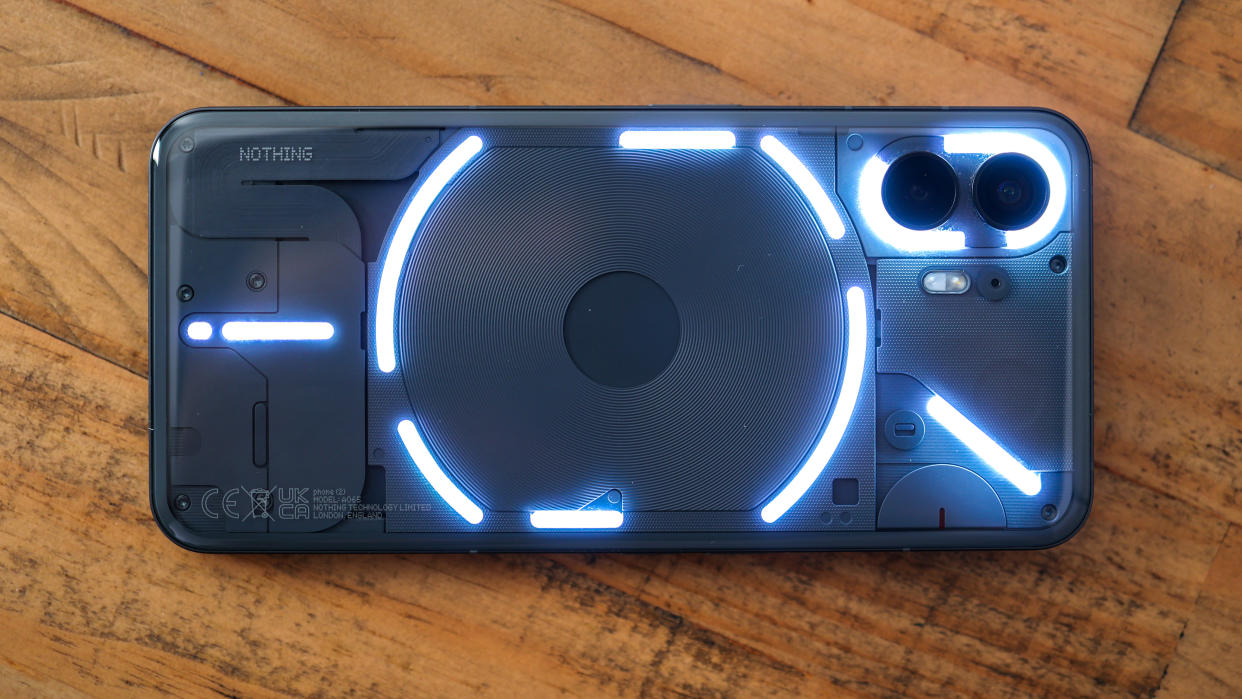
- Oops!Something went wrong.Please try again later.
There are perceptions that the Phone (2) maker, Nothing, is a plucky upstart that pulled the first Nothing Phone (1) out of thin air with blood, sweat, and tears, and that might be true to a degree. After all, Nothing is only in its third year, it's sold over 1.5m products to date between its earbuds and the Phone (1), and the Nothing Phone (2) is only the second phone from the London-based firm.
With millions of dollars in funding, though, Carl Pei at the helm – the co-founder of OnePlus – and investment from the likes of Tony Fadell (who invented the iPod), Kevin Lin (who co-founded Twitch), Steve Huffman (Reddit's CEO), and Casey Neistat (yes, the YouTuber), if Nothing was ever a plucky upstart, it isn't anymore. For 2023, the Nothing Phone (2) is ready to be judged alongside the more established competition.
While the Phone (1) launched at £399 (roughly $522) in the UK, though, the Phone (2), which will sit alongside it, is getting a wider release, starting at $599 / £579 / AU$1049. This price bump suggests we should expect more from the Phone (2) – and the specs deliver.
The Phone (2) packs mightier internals, faster charging, a brighter display and a new, more refined interface. But its cameras are very similar to those of the Phone (1).
So what's the deal; are we simply getting a rehash of a lower-cost camera system, or does the Nothing Phone (2) actually offer meaningful photography and video upgrades?
Nothing Phone (2) review: design and screen
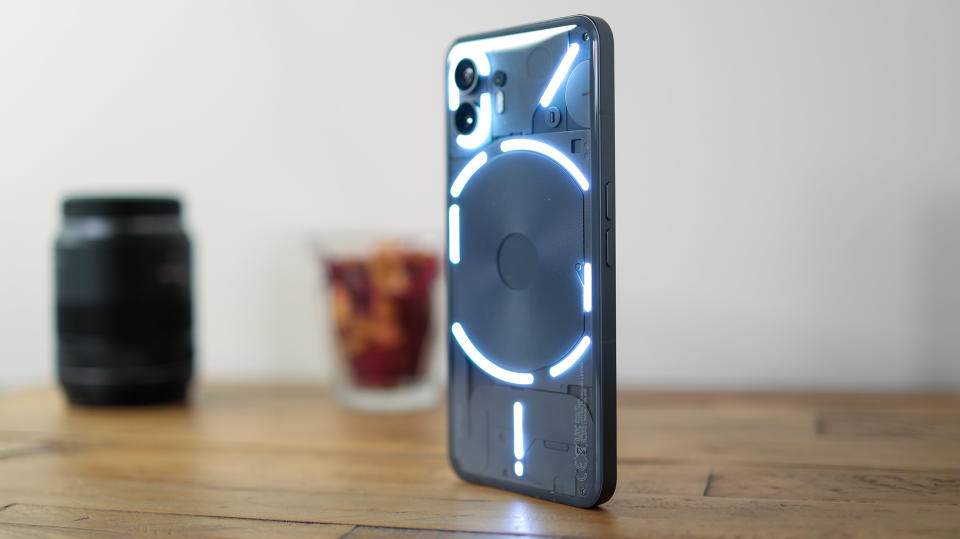
While the Nothing Phone (1) fit in an iPhone Pro Max case without much jiggery-pokery, the Nothing Phone (2) is an altogether more Android shape – taller, slightly curved around the back – and a far superior in-hand experience.
The Phone (2) looks very similar to its predecessor. It has a flat frame and front, matte blasted metal along the sides, and the same button and port configurations: power button on the right, volume buttons on the left, and a USB-C port at the base. It's the in-hand feel that made us appreciate the updates.
With its 6.7-inch screen, the Phone (2) isn't small, sporting a similar footprint to handsets like the Honor Magic 5 Pro, and it's larger than the Pixel 7a. Thanks to a relatively slim profile of 8.6mm and a lightweight 201.2g body, it avoids being cumbersome.

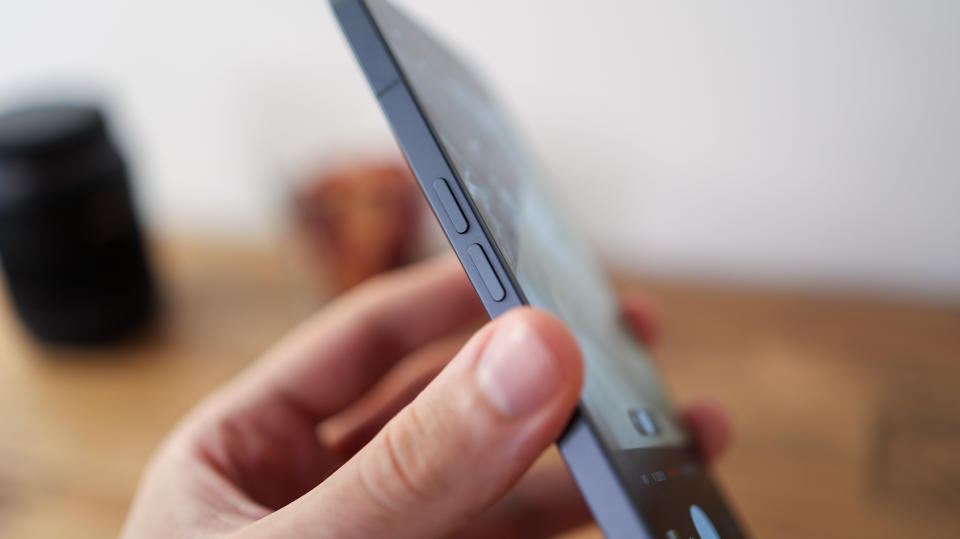
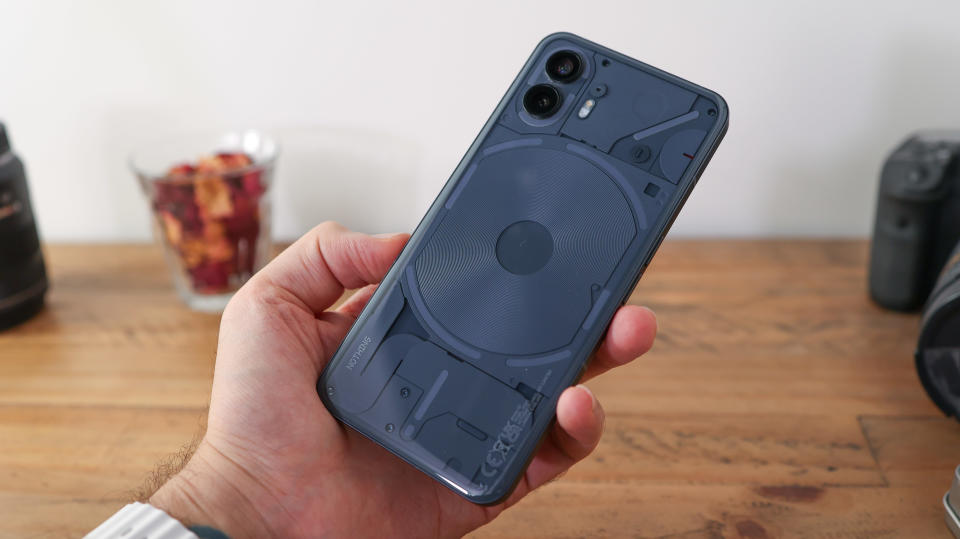
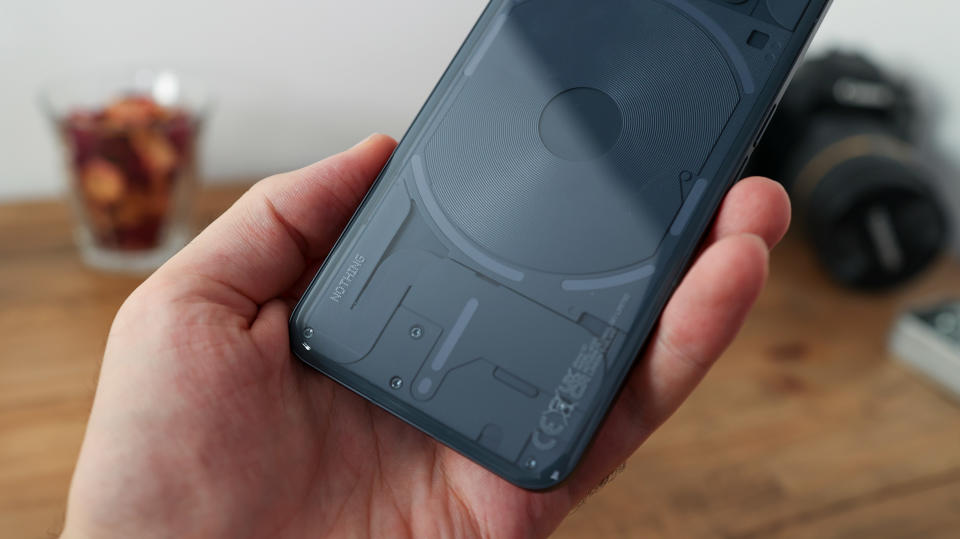
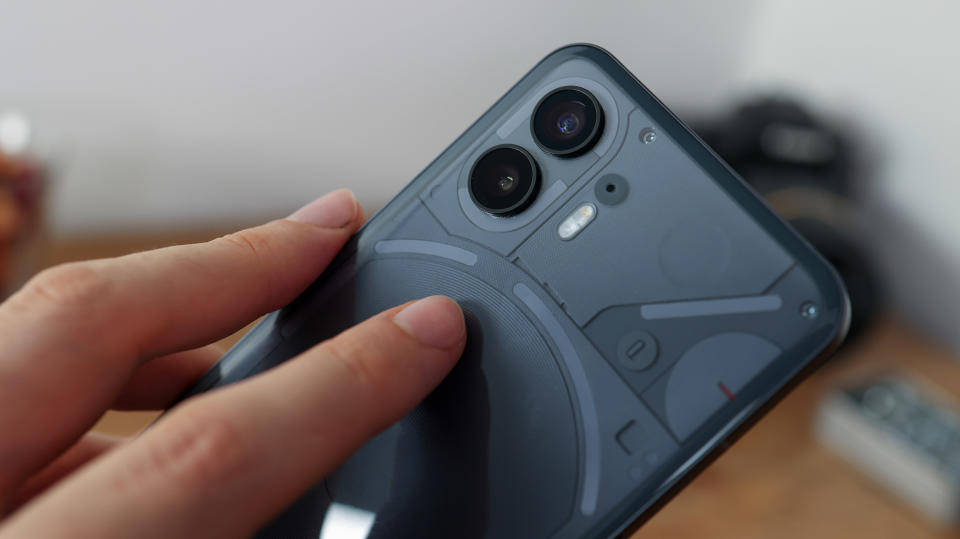
The Glyph Lights around the back of the original Nothing Phone (1) are back, and this time, they're more segmented and a little smarter. They're set against one of two back panel colors, White or Grey, and this all sits beneath a pane of glass.
The slight curve of the rear glass, which melds elegantly into the metal frame, belies the phone's actual thickness while still delivering a comfortable grip. Nothing uses a 100 percent recycled aluminum mid-frame, buttons, and sim tray tip, while 80 percent of Phone (2)'s plastic parts are made with recycled and bio-based materials, and 100 percent of the tin and copper – both conflict minerals – are recycled.
The unboxing experience is also a fun one, with the flat, stylized packaging, SIM eject tool, and USB-C cable. There's no power connector or case in the box, though the phone does have a pre-fitted screen protector.
As for water and dust resistance, the Nothing Phone (2) is IP54 rated, so can handle splashes but not being submerged – competitive at the price – and what the phone lacks in durability, it makes up for with panache.
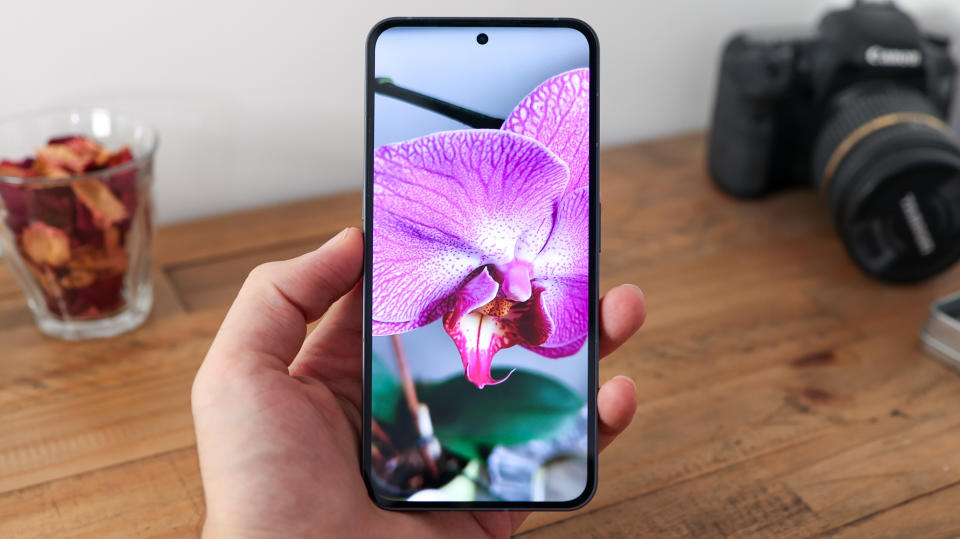
Measuring 6.7 inches, the Nothing Phone (2)'s screen is slightly larger than that of the 6.55-inch Nothing Phone (1), and like other competition in its price range, from the Honor 90 to the Pixel 7, it has a pixel density of around 400PPI, so clarity is on point.
With a 2412x1080 resolution LTPO OLED display that caps out at 120Hz, in addition to being as sharp as it needs to be, the Nothing Phone (2) looks punchy, complete with HDR10 credentials, and it's also smooth.
Thanks to a dynamic refresh rate, the phone can switch between 1-120Hz to save power based on what's on-screen. If you want to save juice, you can also set it to lock at 60Hz, and for the silkiest scrolling possible, keep it at 120Hz.
With excellent viewing angles and impressive 1,000-nit brightness, in addition to a peak brightness of 1,600 nits in HDR mode, it’s easy to see what’s on-screen when outdoors, even on a sunny day.
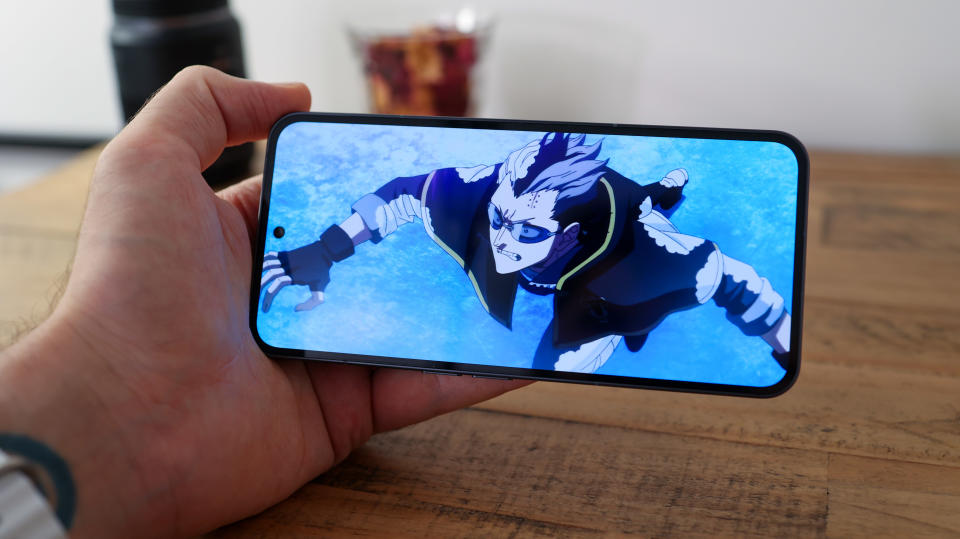
Nothing Phone (2) review: camera specs
The Nothing Phone (2)'s main camera features a Sony IMX890, a minor upgrade to the IMX766 in the Nothing Phone (1). Measuring 1/1.56-inch, it isn't the largest sensor we've seen at the price, with the lower-cost Honor 90's main camera clocking in at 1/1.4-inch, but it's hardly small, slightly larger than the Pixel 7a's 1/1.73-inch sensor.
In the Phone (2)'s favor, when compared to the Honor 90 specifically, Nothing includes OIS, which is a boon. The Phone (2)'s main camera lens also has an open f/1.9 aperture and a 24mm equivalent focal length.
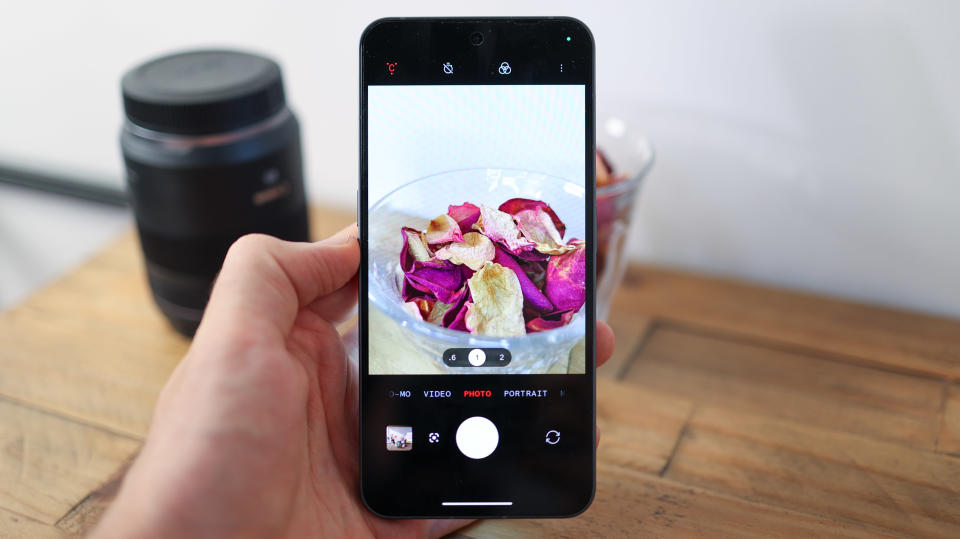
Nothing has brought back the same 50MP ultra-wide it debuted on the Phone (1), combining a Samsung JN1 1/2.76-inch sensor with an f/2.2 lens and autofocus.
For 2023, the selfie camera has been upgraded to a 32MP Sony IMX615 with an f/2.34 aperture, and the phone can capture 4K video at up to 60fps.
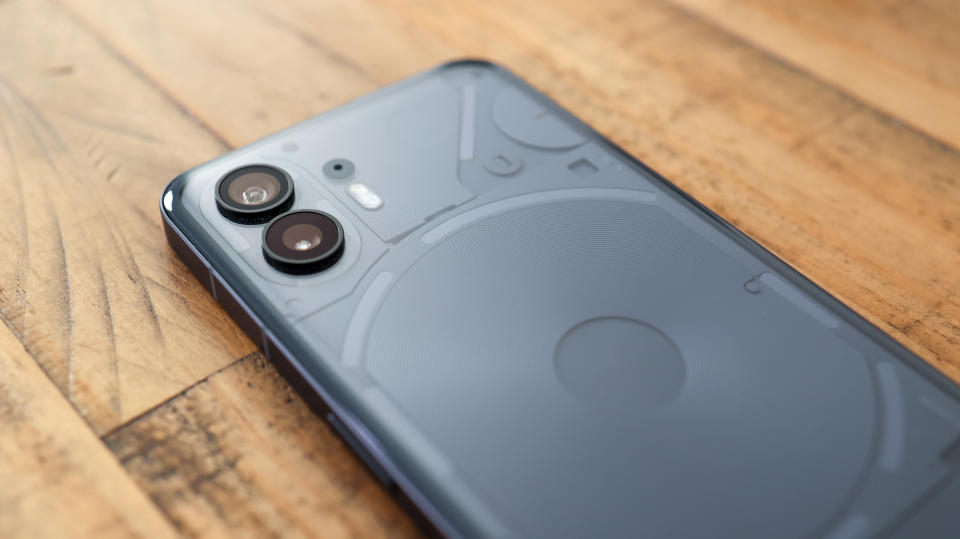
Nothing Phone (2) review: camera review
The Nothing Phone (2)'s 50MP camera system is reliably easy to use in most conditions, which is a great start. Really challenging backlit scenes can throw it off, particularly in the highlights, so while it does a fair job of balancing shadow detail, its processing isn't as reliable as slightly pricier phones like the OnePlus 11 5G, even if it is competitive.
Color balance across the cameras is, for the most part, consistent, and detail is fairly strong when shooting in well-lit scenes too. While phones like the Honor 90 see a vast detail discrepancy across ultra-wide and main cameras, Nothing gives a more comparable primary/wide experience – even if it can't measure-up to Oppo flagships.



The main camera will still be your go-to in most situations. It handles mixed /low-lit scenes well, the automatic night mode fires up when the lights drop, and focus is reliably good. Processing is more nuanced than it was on the Nothing Phone (1), so while the hardware is very similar, the Nothing Phone (2) appears to deliver greater clarity with less discernable sharpening.
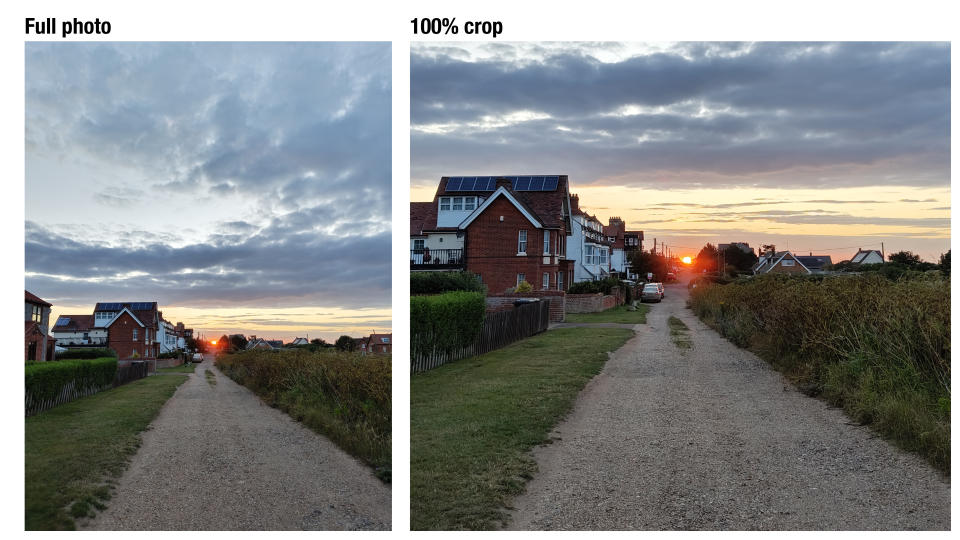
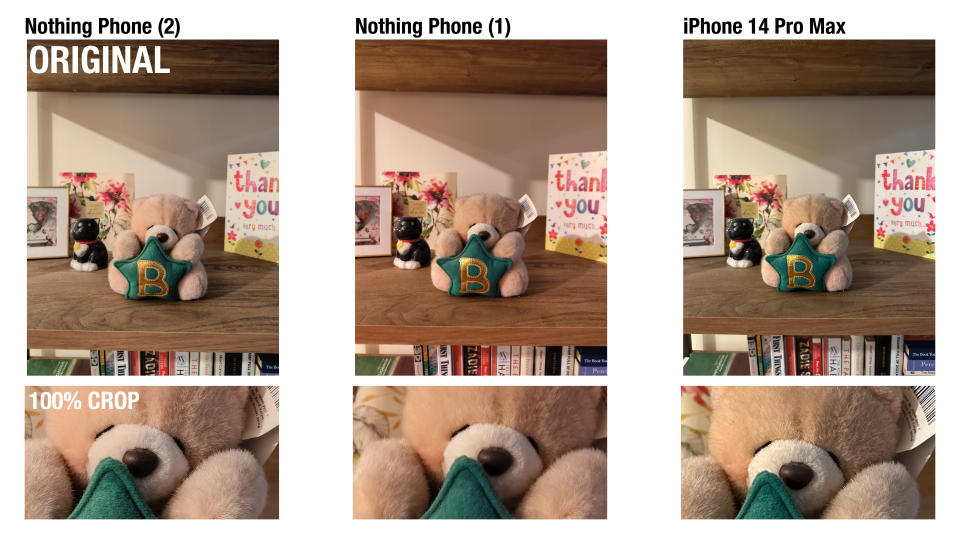
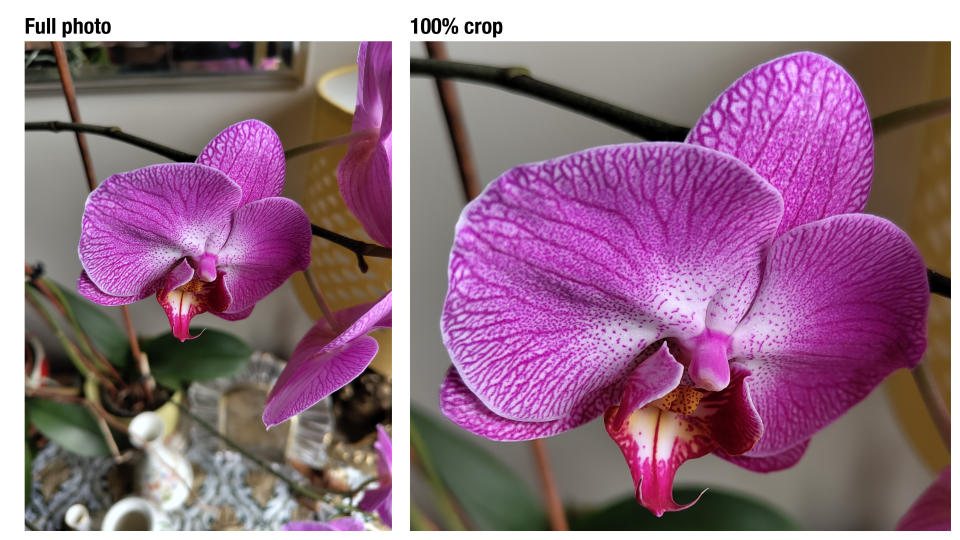
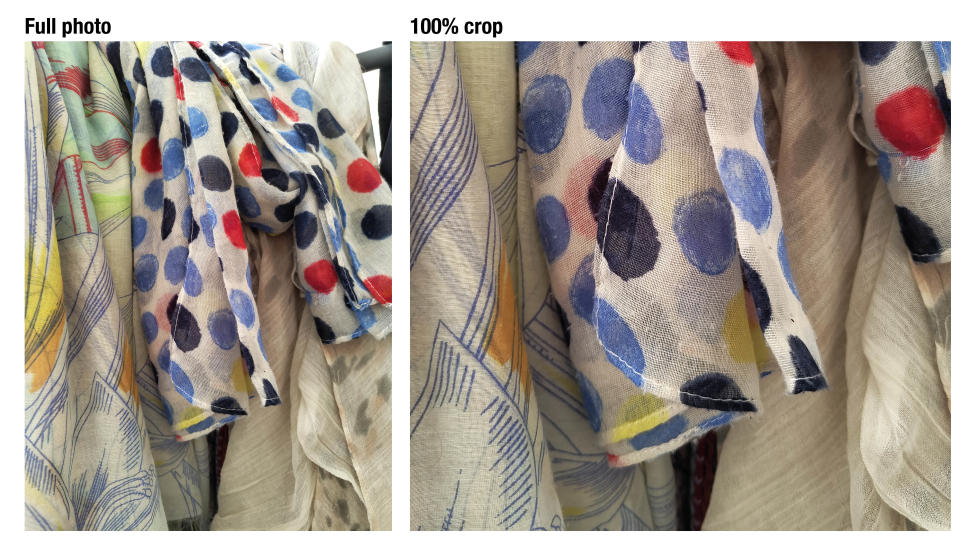
The main camera isn't perfect – while many brands are getting very aggressive with their HDR capture, salvaging incredible amounts of detail from highlights, Nothing's pared-back processing hurts it in some situations. The image below doesn't just illustrate a blown-out sky, but also some gnarly purple fringing.
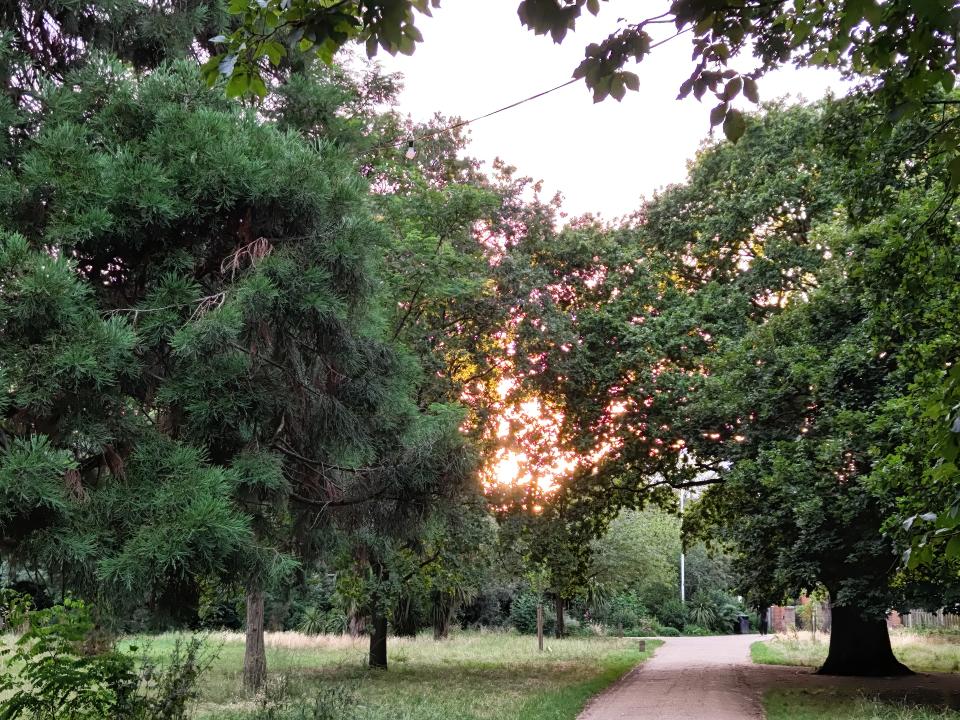
When faced with most situations, though, from natural to artificial lighting, daylight to sunset, and even nighttime shots, while the Nothing Phone (2) will seldom be the best at capturing every kind of photo, it will usually be at least good – oftentimes very good.
So while the hardware is very similar across the Nothing Phone (1) and Phone (2) cameras, the Phone (2) is definitely better, possibly down to processing or the new 18-bit ISP that's packed in the mighty Snapdragon 8+ Gen 1 chip powering the phone along.








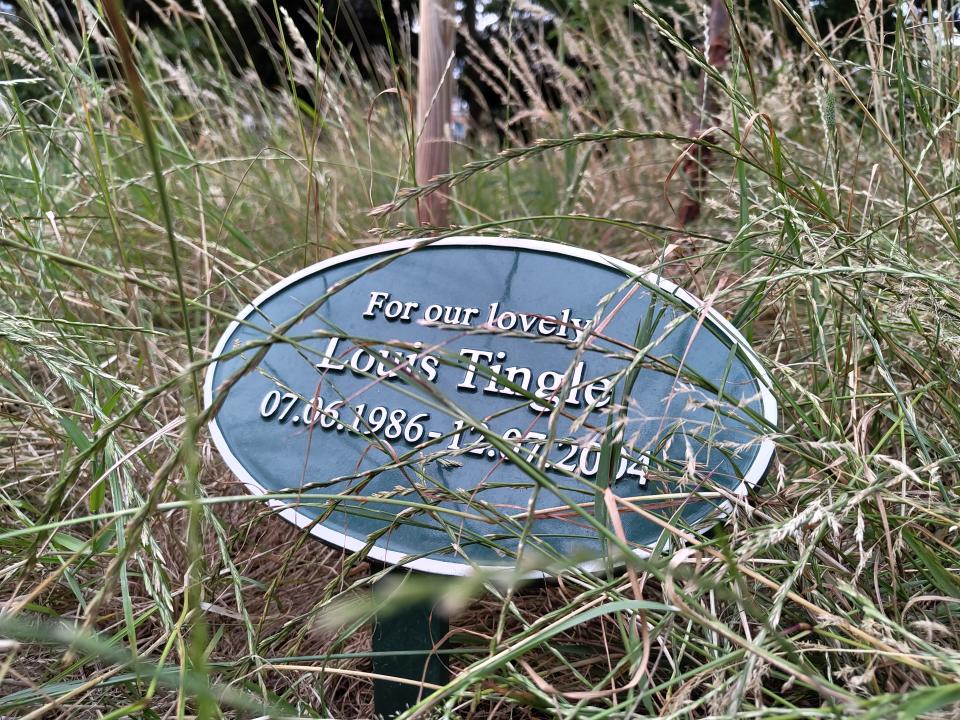
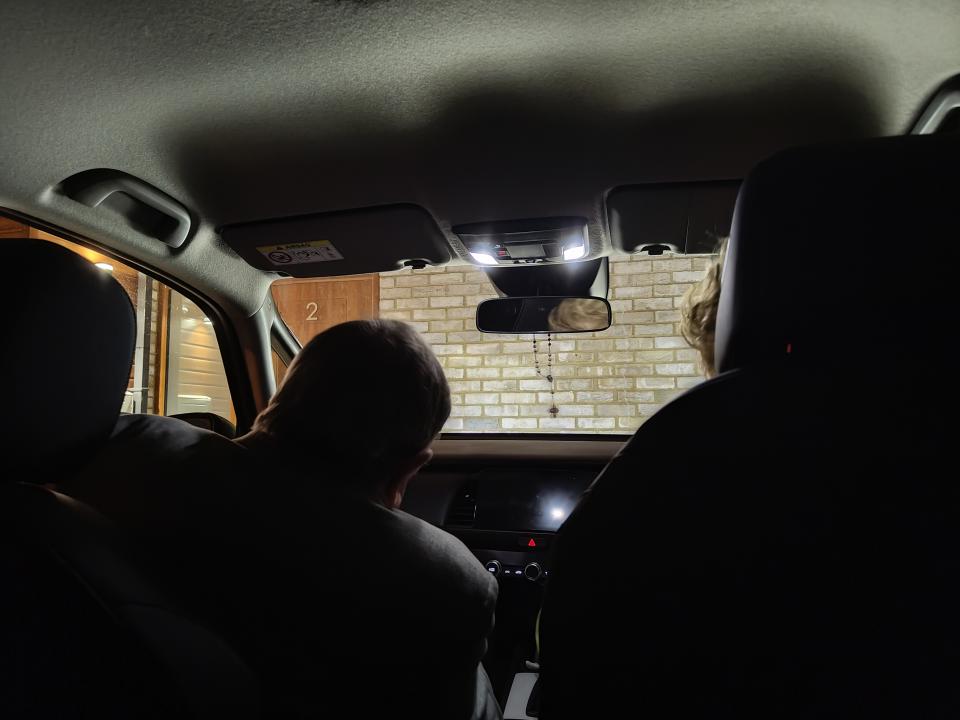
The chipset's power also helps the Nothing Phone (2) with video, capturing 4K clips at up to 60fps, and they look mighty, with plenty of detail and quick focus. Selfies are also improved for the Phone (2), with the handset handling different skin tones we tested it with well, and being relatively flattering, though the front camera's video capping out at 1080p might turn some off.
Nothing Phone (2) review: performance and battery
The Nothing Phone (2)'s Qualcomm Snapdragon 8+ Gen 1 chip does a very good job of powering the Nothing experience, from the Glyph lights to its smooth interface and that brilliant screen when gaming or powering through tasks.
While there is a newer, more powerful processor out now – the Snapdragon 8 Gen 2, that doesn't change the fact most people won't need more power than the Nothing Phone (2) packs, so the price-to-performance ratio is spot-on.
What Nothing adds that other phones with more power miss out on is personality. The Phone (2)'s glyph lights are matched with dot-matrix interface elements and retro sounds to create the strongest branding effort we've seen on any smartphone since, well, the iPhone.
Nothing also plays with its interface experience, making Phone (2) users feel like they're on-trend, while simultaneously being fantastically geeky. Take the Glyph Composer – an app that lets you create your own ringtone with corresponding flashing light elements. Then there's the Nothing Icon Pack, which turns your icons black for distraction-free scrolling through your interface.
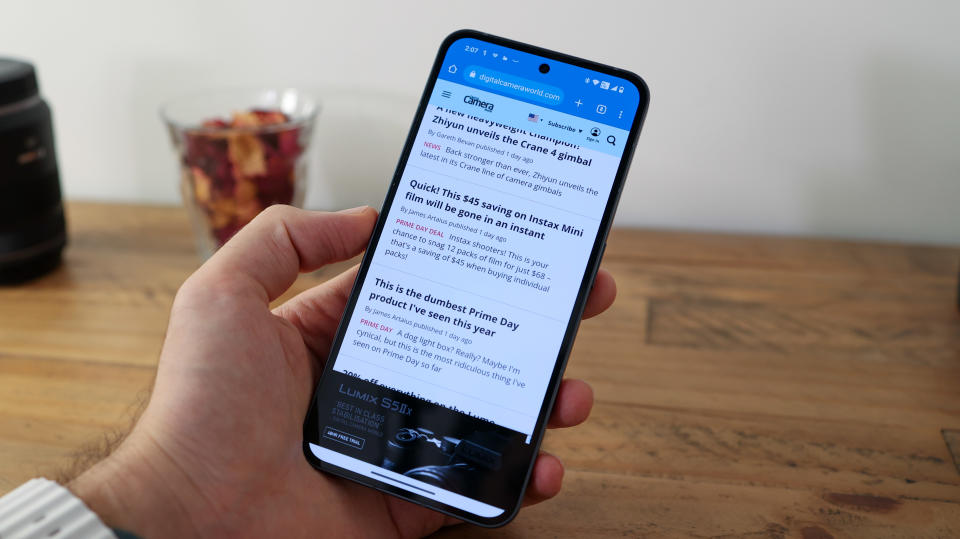
Nothing's folder management in Nothing OS 2.0 (which runs on Android 13) is also worth mentioning. It gives you control over your folder appearance in a smart, minimalistic way so that you can hide folder contents with a dot-matrix icon. In the same breath – if you want to be maximalist and flood your UI with widgets and folders, Nothing's experience is flexible enough to accommodate that.
The Nothing Phone (2) doesn't have expandable storage, but it does start with 128GB and climbs up to either 256GB or 512GB storage. With either 8GB or 12GB RAM and that Snapdragon 8+ Gen 1, we found multitasking across apps was handled well, though we did notice in our time with it, the Phone (2) was slower to get notifications than our iPhone 14 Pro Max or Pixel 7 Pro.
An adequate 4700mAh battery makes sure the Nothing Phone (2) lasted a whole day in our tests, even with plenty of photo taking and video capture, and upgraded 45W fast charging means you can power up the phone in under an hour. We love the fact Nothing has opted for a standardized PD charging system, so while it falls behind some faster-charging competition on paper, more types of charging bricks and cables will hit those high speeds – and the 15W wireless charging is excellent to have too.
Verdict
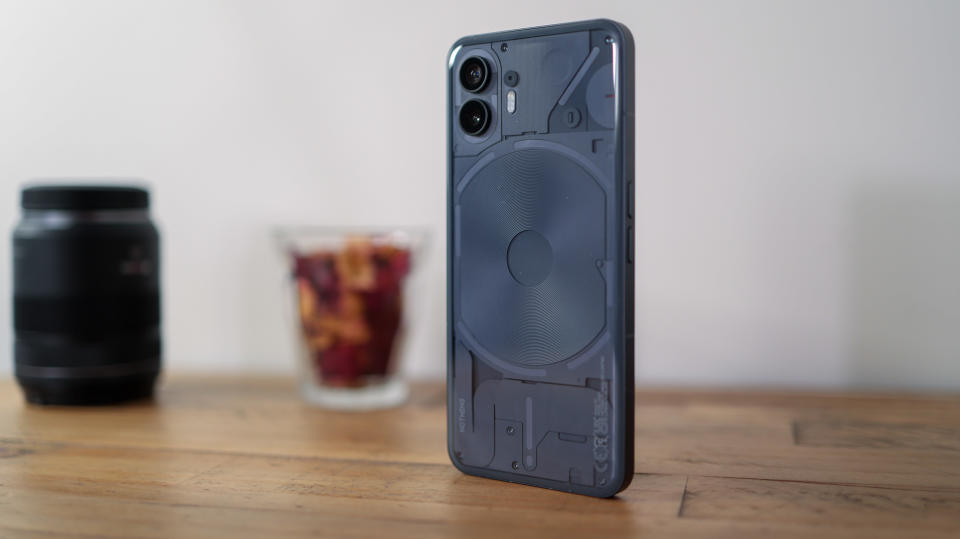
The Nothing Phone (2) is a landmark handset, even if it isn't the best camera phone of 2023.
Its styling is nothing short of a tonic to the slew of samey smartphones on shelves, and that extends to the interface as well as the exterior.
Nothing's managed to create a brand identity that's stronger than the established competition in a fraction of the time, and the fact it's pairing that feat with competent hardware and software is excellent going.
We applaud Nothing for sticking with two good-quality cameras. There aren't any depth sensors or 2MP macro fillers tarnishing a competent camera array. Both of the rear cameras do a reliable job of being good, even if there are occasional misses in challenging environments.
With the Nothing Phone (1) staying on shelves in regions it's on sale (not the US), at its lower-than-launch price, it's still an attractive option a year on. What's also handy is that the Nothing Phone (2) is a better phone in every respect, so we don't have to look for a reason for it being more expensive – it upgrades everything without rendering the original obsolete.
Add four years of security updates and three years of software updates to the mix, and between future-proofing, good value, and style in spades, the Nothing Phone (2) is a superb smartphone.
Read more: if you like the look of the Nothing Phone (2), but want an alternative with more consistent photo processing, read up on some of the best Google Pixel phones out now.

